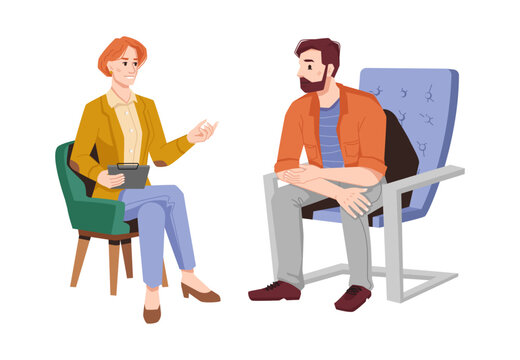As the world continues to change and evolve, so too does the way we access mental health services. With the rise of teletherapy, counseling has become more accessible than ever before. But how can you make the most out of this new format? How can you ensure that you’re getting the best possible care through a screen? In this ultimate guide to online counseling, we’ll explore everything you need to know to master teletherapy and get the most out of your virtual counseling sessions. From choosing the right platform to building a strong therapeutic relationship with your counselor, we’ve got you covered. So whether you’re a seasoned therapy-goer or new to the process entirely, read on for everything you need to know about mastering teletherapy.
The Benefits of Teletherapy: Why Online Counseling Is Here to Stay
Teletherapy has become increasingly popular in recent years, and the COVID-19 pandemic only accelerated this trend as more people are seeking mental health services online. Convenience is one of the key benefits of teletherapy, as it allows clients to access therapy from anywhere with an internet connection. This means that individuals who might have difficulty making in-person appointments due to disabilities or transportation issues can still receive the care they need.
Another advantage is that teletherapy sessions can be more flexible than traditional counseling appointments because therapists often offer evening and weekend hours. Additionally, virtual sessions may provide a sense of anonymity for those who prefer not to attend therapy in person.
Research suggests that teletherapy is just as effective as face-to-face counseling for many mental health conditions such as anxiety, depression, and PTSD. It also offers some unique advantages — like being able to see your therapist’s facial expressions up close — which could enhance therapeutic outcomes.
Overall, teletherapy offers a valuable service to those seeking help for their mental health concerns by providing increased accessibility and flexibility without sacrificing quality care.
Setting Up for Success: How to Prepare Yourself and Your Clients for Teletherapy Sessions
Teletherapy sessions require a different kind of preparation compared to in-person counseling. First, ensure that you have a reliable internet connection and a quiet, private space for the session. Test your equipment beforehand to avoid technical difficulties during the session. It’s also important to prepare your clients for teletherapy by explaining how it works and what they can expect. Provide clear instructions on how to access the platform you’ll be using and any necessary paperwork they need to fill out beforehand. Encourage them to find a comfortable, private space for the session and minimize distractions. Discuss confidentiality and privacy concerns with them, including what measures you have in place to protect their information. Finally, establish clear boundaries around communication outside of sessions and emergency protocols in case of crisis situations.

Best Practices for Conducting Effective Teletherapy Sessions
Conducting an effective teletherapy session requires some adjustment to the standard in-person therapy practices. One of the most important things is to minimize distractions both from your end and the client’s end. It’s best to use a dedicated space for teletherapy sessions, free from noise or interruptions. Maintaining eye contact is also crucial, so position your camera at eye-level.
Another best practice is to have clear communication with clients regarding their expectations for the session and any technological requirements they need. For instance, if they prefer video calls over phone calls or if they have specific camcorders or gadgets that are necessary for a successful meeting.
Remember that nonverbal cues may be harder to read on screen than in person, so it’s wise to pay extra attention as you speak and listen actively while taking notes during the conversation. Lastly, having backup plans such as using other technology resources will certainly help prevent technical difficulties caused by internet outages or signal problems in general.
By incorporating these tips into your online counseling session routine, you can conduct highly productive virtual meetings with clients that mimic many of the benefits of traditional face-to-face therapies without leaving anyone behind who needs professional support more than ever before!
Overcoming Challenges in Teletherapy: Common Issues and How to Address Them
Technical Difficulties: Troubleshooting Tips for a Smooth Teletherapy Session
During teletherapy sessions, technical difficulties can arise that disrupt the flow and effectiveness of the session. To ensure a smooth experience, it’s important to have troubleshooting tips at your disposal. Internet connectivity is one common issue faced during online counseling, so make sure you have a backup plan in case of disconnection or slow speeds. Having an alternative means of communication like phone calls or chat messaging can help continue the session without interruption. Another tip is to test equipment beforehand and advise clients to do the same. Encourage them to find a quiet space with minimal distractions and proper lighting for optimal video quality.
Building Connection Through Digital Screens: Strategies to Overcome the Barrier of Distance
Building connection with clients in teletherapy can be a challenge due to the physical distance and the limitations of digital screens. However, there are strategies that can help overcome this barrier. Active listening is key – paying close attention to clients’ verbal and nonverbal cues can provide important insights into their thoughts and feelings. Additionally, utilizing tools such as video conferencing software features like screen sharing or virtual whiteboards may allow for more interactive sessions that help bridge the gap between in-person and online therapy. With intentional effort towards building connections over digital screens, remote counseling can be just as effective as traditional face-to-face sessions.
Maintaining Confidentiality and Security in Teletherapy: Best Practices to Keep Your Clients Safe
Confidentiality and security are crucial aspects of teletherapy that must be carefully considered. One challenge is ensuring that virtual sessions remain private, with no one overhearing the conversation or gaining access to client information. To address this issue, make sure your clients choose a secure location for their session and use headphones to avoid any potential eavesdropping. Additionally, consider using HIPAA-compliant video conferencing software with end-to-end encryption for added protection against unauthorized access. Finally, it’s important to discuss confidentiality protocols with your clients beforehand, including how to handle emergency situations and what steps you’ll take in case of a breach in security or privacy.
Dealing with Distractions: Tips for Staying Focused During Online Counseling Sessions
Staying focused during teletherapy sessions is crucial for both the counselor and the client. Common distractions such as background noise, internet connection issues or interruptions from family members can disrupt the flow of a session and hinder progress. To prevent distractions, counselors should ensure that they have a quiet and private space to conduct sessions in. It may also be helpful to use noise-canceling headphones and invest in reliable equipment. Encouraging clients to find a distraction-free environment on their end is equally important; counselors can suggest tips like finding a quiet room or informing family members beforehand about their scheduled sessions. By minimizing distractions, teletherapy sessions will run more smoothly and lead to better outcomes for all parties involved.

Ethics in Teletherapy: Navigating Confidentiality, Boundaries, and More
In the world of teletherapy, it is essential to uphold ethical standards and regulations that protect both the therapist and client. Confidentiality is one of the most crucial aspects of online counseling, as privacy breaches could lead to legal consequences or harm to clients. Therefore, it is necessary to ensure that all technology used in teletherapy sessions are secure and HIPAA compliant.
Therapists must also establish clear boundaries with their online clients regarding communication outside of scheduled sessions. It’s important to set expectations for response times and make sure clients understand how they can reach out for emergency support.
Lastly, virtual therapy requires therapists to navigate unique ethical considerations such as ensuring proper informed consent from clients before starting services, understanding limitations around diagnosing without an in-person assessment, and being aware of cultural differences between themselves and their clients.
By adhering closely to guidelines provided by professional organizations like the American Psychological Association (APA) or National Board for Certified Counselors (NBCC), therapists can provide high-quality teletherapy while maintaining strict ethical standards.
In conclusion, teletherapy is a rapidly growing field that holds great potential for both counselors and clients. With the many benefits of online counseling, such as increased accessibility and flexibility, it’s no wonder that more people are turning to this method of therapy. By setting yourself up for success and following best practices in conducting effective teletherapy sessions, you can ensure that your clients receive high-quality care regardless of their location. It’s important to also be aware of common challenges that may arise during teletherapy and how to address them while navigating ethical considerations such as confidentiality and boundaries. By mastering teletherapy, you’ll not only expand your skills as a counselor but also open up new possibilities for helping others from all corners of the world.
